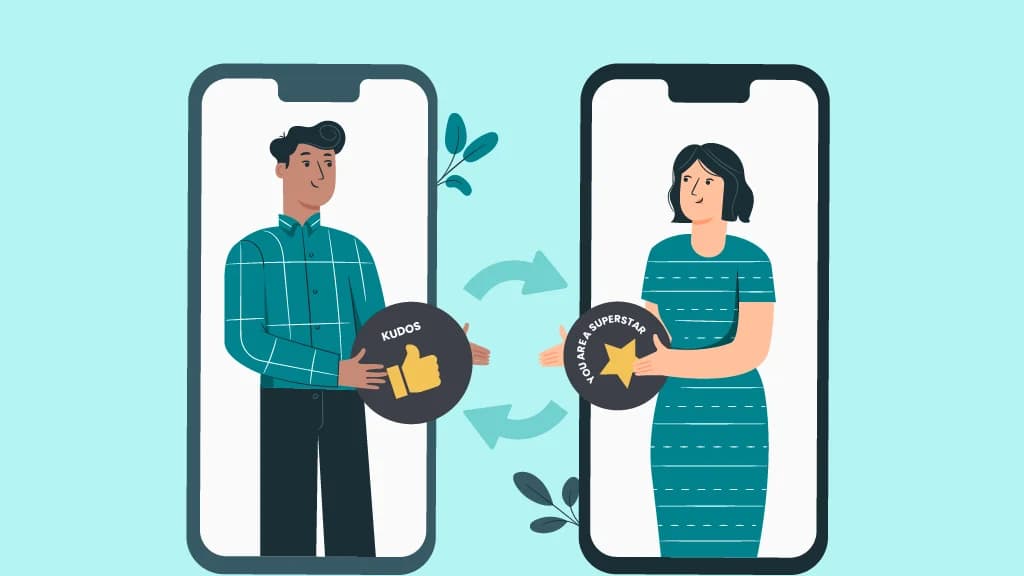
Imagine a work environment where every “thank you” counts, cultivating a culture of genuine gratitude. That is the power of social recognition; it transforms ordinary moments into remarkable ones. It is not just a pat on the back; it is making all the efforts count.
Agentic AI makes it easy to bridge humans, making appreciation easy between teams. This move drives motivation, making work exciting and rewarding. Skip traditional ways; this is real-time recognition that keeps employees motivated and contributes to company culture.
What is Social Recognition, and Why Does it Matter?
Social recognition is a public thanking and rewarding effort. It’s not just bosses praising; it’s the team acknowledging and appreciating each other. This makes people feel good and appreciated. When employees feel that their work is appreciated, they enjoy their work more and work more efficiently. Unlike official employee recognition awards, social recognition is immediate and more personalized. When businesses do that daily, employees remain motivated, collaborate more effectively, and accomplish more together.
Why Does it Matter?
- Makes Staff Happy and Committed: People who feel valued work and love their job more.
- Enforces Good Behaviour: Witnessing others being congratulated motivates other staff members to do their best.
- Builds a Cooperative Workplace: Frequent thanking makes teams a pleasure to work with and builds office swag.
- Honors Everyone's Effort: Public thanking ensure no effort goes unnoticed.
Benefits of Social Recognition for Organizations
- Boosts Employee Engagement: Employees who feel appreciated work and remain focused. They love their work, and that immediately impacts their performance.
- Reduces Expenses and Increases ROI: Happy employees mean they remain longer, and hiring and training new employees is expensive, so money is saved on them. Happy employees also perform better.
- Encourages Company Values: When individuals see others at the company rewarded for behaving well, they are inclined to do the same. This promotes a positive company culture.
- Enhances Employer Branding: A firm that rewards employees will attract better talent. When job candidates notice a company rewarding employees, they will be more inclined to work there.
- Improves Customer Experience: Happy employees serve customers better. Employees who feel valued and appreciated will be more willing to provide excellent customer service. This leads to happy customers and long-term business growth.
Implementing Social Recognition Programs
To make an employee rewards & recognition social program effective, follow these steps:
- Define Clear Goals: Define what you wish to accomplish, such as making your employees feel appreciated or reinforcing company culture. Clear goals assist in measuring success.
- Choose the Right Platform: Select a platform that is right for your company and integrates with your existing systems. It should be easy to use and monitor recognition easily.
- Make Equal Rules: Define precisely what action deserves appreciation. As rules are formed, everybody knows what earns them appreciation.
- Train Managers: Educate managers on how they can reward and recognize workers. This builds a working environment where appreciation is a daily phenomenon.
- Get Feedback: Listen to workers and adjust the program based on their comments. Ongoing feedback maintains the system equal and effective.
Best Practices for Effective Social Recognition Programs
Follow these easy steps to make your recognition scheme more effective:
- Make It Quick and Often: Express "thank you" early or use office superlatives to boost employee engagement. When positive feedback is delivered promptly, people feel appreciated and keep on doing it.
- Keep It Real and Personal: Personalize each "good job." Personalized compliments sound more authentic and express actual appreciation.
- Include Everyone: Give all the employees an equal opportunity to get noticed. If everyone feels significant, they put in more effort and are happier.
- Get Leaders Involved: Employee recognition by managers is about leading by example. Their support makes the program stronger.
- Use Technology: Recognition software makes life easy. It helps keep it easy to keep tabs on who gets recognized and makes things fair.
Social Recognition Examples
Most businesses use social appreciation to reward staff:
- Google: Their "gThanks" program enables employees to thank each other, making work rewarding.
- Zappos: They have a "Hero Award" to reward employees who exceed and go beyond the call of duty for customers.
- Remote Teams: Technology online enables remote employees to feel recognized and connected.
The Role of Leadership in Driving Social Recognition
Leaders are responsible for making social recognition effective. They must lead by example, participate in recognition programs, and ensure employees recognize one another. When the leaders promote and facilitate recognition, it will become an embedded part of company culture where employees are valued and motivated.
Harnessing the Power of Social Recognition
Social appreciation enables employees to appreciate their worthiness, increasing involvement and job satisfaction. Appreciation also strengthens company values, leading to improved workplaces. With technologies such as Agentic AI, businesses can empower employee well-being, retain employees, and achieve success.
Appreciation of hard work fosters collaboration and motivation. It also promotes a quality company image that draws the best employees and retains customers. Bring social recognition to drive a culture where appreciation fuels success. Develop employee well-being, enhance retention, and drive your business in the digital economy.






